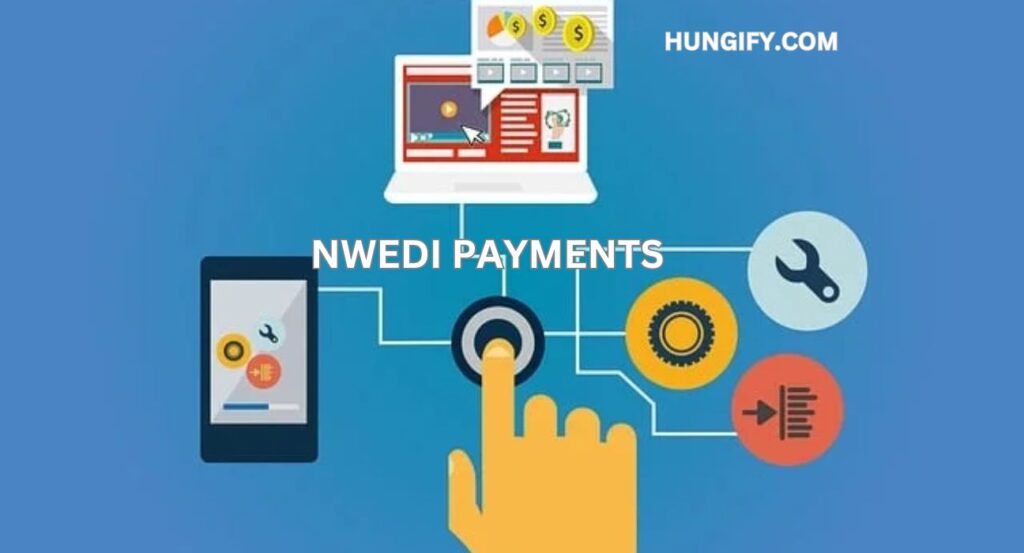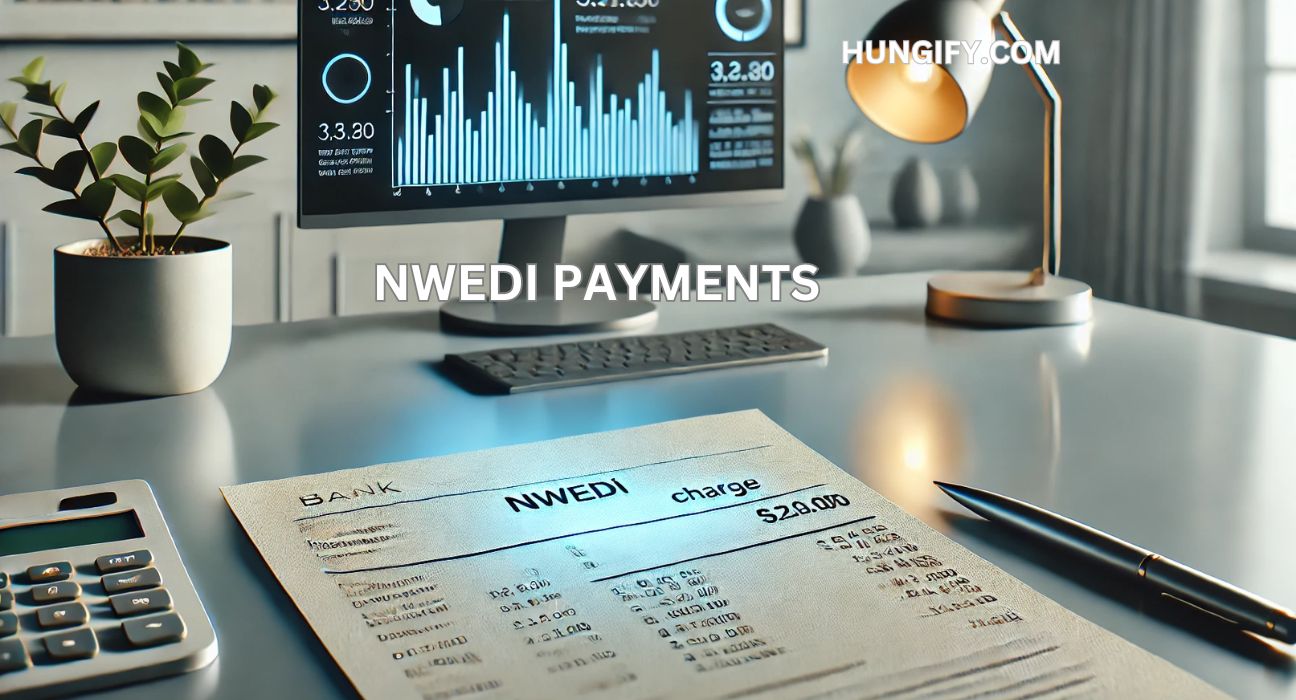NWEDI payments, also known as Nationwide Electronic Data Interchange (EDI) payments, are a common entry on bank statements, especially for those using Nationwide Building Society’s financial services. If you’ve come across an NWEDI payment on your bank statement and are unsure what it signifies, this article will help clarify its purpose and importance. We will explore what NWEDI payments are, why they appear, and how to manage or prevent unauthorized charges.
Read More: CSC Service Work Charge on Credit Card: Legit or Fraud?
Introduction to NWEDI Payments
What Are NWEDI Payments?
NWEDI payments refer to the electronic transfer of funds processed using the Electronic Data Interchange (EDI) system by Nationwide Building Society. This system enables businesses and financial institutions to exchange electronic documents, such as invoices, purchase orders, and payments, securely and efficiently.
Overview of NWEDI on Bank Statements
When you see “NWEDI” on your bank statement, it indicates that Nationwide used the EDI system to process a payment, deposit, or other financial transaction. This type of payment helps streamline operations and reduce the need for paper-based transactions, making it more secure and efficient.
Why Do NWEDI Charges Appear on Your Bank Statement?
Common Reasons for NWEDI Payments
NWEDI charges commonly appear on your bank statement when an electronic transaction is made using the EDI system. This could include online bill payments, payroll deposits, or transfers between accounts. The charge signifies that Nationwide’s EDI network was used to process the payment or deposit.
How Do NWEDI Charges Show Up on Bank Statements?
NWEDI charges may appear under various labels on your bank statement, such as “NWEDI Payment,” “Nationwide EDI Payment,” or “NW EDI Charge.” The exact description varies depending on your bank’s format. It’s important to review your statement carefully to ensure all NWEDI-related charges are legitimate.
Understanding the Meaning of NWEDI Payments
What is the Purpose of NWEDI Charges?
The purpose of NWEDI charges is to facilitate secure electronic transactions between businesses and financial institutions. This system reduces the need for manual processing, decreases the likelihood of errors, and speeds up transaction times. NWEDI is primarily used by Nationwide Building Society for efficient transaction management.
Types of Transactions Processed Through NWEDI
NWEDI payments can include various types of transactions, such as:
- Payroll Direct Deposits: When employers use EDI to pay salaries directly to employees’ bank accounts.
- Bill Payments: Payments made through Nationwide’s online banking system.
- Inter-Bank Transfers: Transfers between Nationwide and other financial institutions.

Benefits of NWEDI for Financial Institutions and Customers
Faster Processing and Reduced Paperwork
The use of EDI technology allows banks to process transactions more quickly and with fewer errors. This efficiency reduces the need for paper documentation, saving time and resources for both banks and customers.
Enhanced Security and Accuracy
NWEDI payments are encrypted and authenticated, providing enhanced security compared to traditional methods. This minimizes the risk of fraud and ensures that payment data is accurate and secure during transmission.
How to Identify and Manage NWEDI Charges
Steps to Confirm Legitimate NWEDI Payments
To confirm the legitimacy of an NWEDI payment, review the details on your bank statement, including the date and amount of the transaction. If you are unsure about a specific NWEDI charge, contact your bank’s customer service to verify the transaction.
Dealing with Unauthorized NWEDI Charges
If you notice an unauthorized NWEDI charge, report it to your bank immediately. Your bank can investigate the charge, block your card if necessary, and take steps to prevent future unauthorized transactions.
Read More: Understanding the 50 Beale Street San Francisco Charge on Credit Card
Preventing Unauthorized NWEDI Charges
Tips to Secure Your Payment Information
- Use Strong Passwords: Create strong, unique passwords for your online banking accounts and update them regularly.
- Enable Two-Factor Authentication: Add an extra layer of security by using two-factor authentication (2FA) for your accounts.
- Avoid Sharing Personal Information: Do not share your bank details or personal information on unsecured platforms or with unknown individuals.
Setting Up Alerts for NWEDI Transactions
Most banks offer transaction alerts via email or SMS. Set up alerts for large or suspicious transactions to stay informed and catch unauthorized activity early.
NWEDI Payments on Bank Statement
When you see NWEDI payments on your bank statement, it means that Nationwide processed an electronic transaction through its Electronic Data Interchange (EDI) system. This charge typically appears for online bill payments, direct deposits, or transfers made using Nationwide’s EDI network. It’s essential to review your bank statement carefully to confirm the legitimacy of any NWEDI payment.
What is NWEDI Payments?
NWEDI payments refer to transactions processed using the Electronic Data Interchange system by Nationwide. This system enables the electronic exchange of financial documents like payments and deposits, reducing the need for manual processing and increasing transaction efficiency.
NWEDI Payments Flex
NWEDI payments flex may refer to flexible transaction processing through the EDI system. It indicates a category of electronic transactions that can include various payment types, such as bill payments and transfers, processed outside of regular banking hours.
NWEDI Payments Phone Number
If you need to contact someone about NWEDI payments, you can reach out to your bank’s customer service department or the official support line for Nationwide. Look for the contact number provided on your bank statement or the bank’s website to get specific details about the charge.
What Does NWEDI Payments Stand For?
NWEDI stands for Nationwide Electronic Data Interchange. Nationwide Building Society uses it to facilitate electronic payment processing, making transactions quicker, safer, and more efficient.

Conclusion
In summary, NWEDI payments are electronic transactions processed through the Nationwide EDI system. These payments offer numerous benefits, including faster processing times, enhanced security, and reduced manual errors. While NWEDI payments are typically safe, it’s essential to monitor your bank statements regularly to identify any unauthorized charges. If you have any concerns about NWEDI payments, contact your bank for further assistance and clarification.
Read More: What is HUM COMPBEN E MER? A Guide to This Charge
Frequently Asked Questions (FAQs)
1. What are NWEDI payments?
NWEDI payments are electronic transactions processed through the Nationwide Electronic Data Interchange (EDI) system. They typically appear on bank statements for bill payments, direct deposits, or inter-bank transfers.
2. Why do NWEDI payments appear on my bank statement?
NWEDI payments appear on your bank statement when Nationwide processes a transaction using its EDI system. This can include payroll deposits, bill payments, or other electronic transfers.
3. Are NWEDI payments safe?
Yes, NWEDI payments are safe as they are processed through a secure electronic data interchange system. However, it’s important to regularly check your bank statements for any unauthorized charges.
4. What does NWEDI stand for?
NWEDI stands for Nationwide Electronic Data Interchange. It’s a system used to facilitate secure electronic transfers and payments.
5. Can I get a refund for an incorrect NWEDI charge?
Yes, if you notice an incorrect or unauthorized NWEDI charge, you can contact your bank to request a refund. Provide the transaction details for a quick resolution.
6. What types of transactions are processed through NWEDI?
NWEDI can process a variety of transactions, including direct deposits, bill payments, and inter-bank transfers. It is used to streamline electronic transactions and minimize errors.
7. How can I identify an NWEDI charge on my bank statement?
You can identify an NWEDI charge on your bank statement by looking for labels like “NWEDI Payment” or “Nationwide EDI Payment.” If unsure, contact your bank for clarification.
8. What should I do if I see an unauthorized NWEDI payment?
If you see an unauthorized NWEDI payment, report it to your bank immediately. They can block your card, investigate the charge, and help recover the funds.
9. Which banks use NWEDI for transactions?
NWEDI is primarily used by Nationwide Building Society. However, other banks may use similar systems for electronic data interchange.
10. How can I prevent unauthorized NWEDI charges?
You can prevent unauthorized NWEDI charges by setting up transaction alerts, using strong passwords, enabling two-factor authentication, and monitoring your bank statements regularly.
